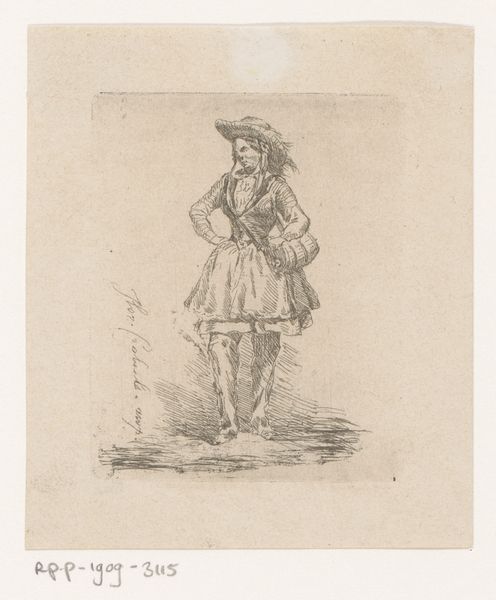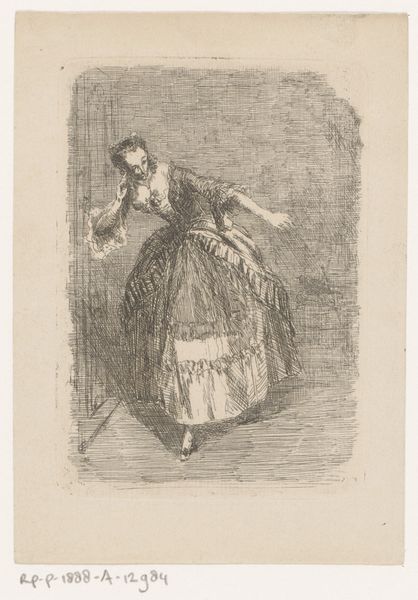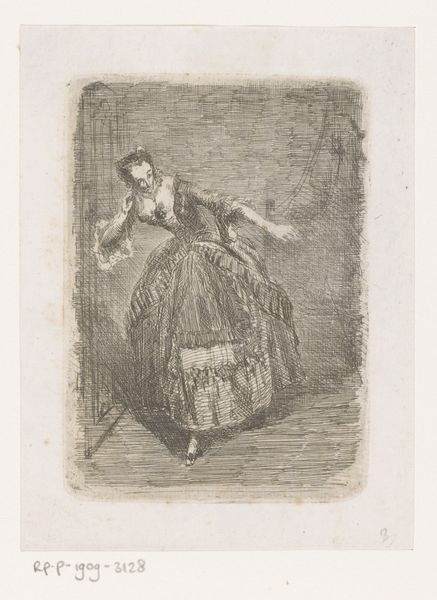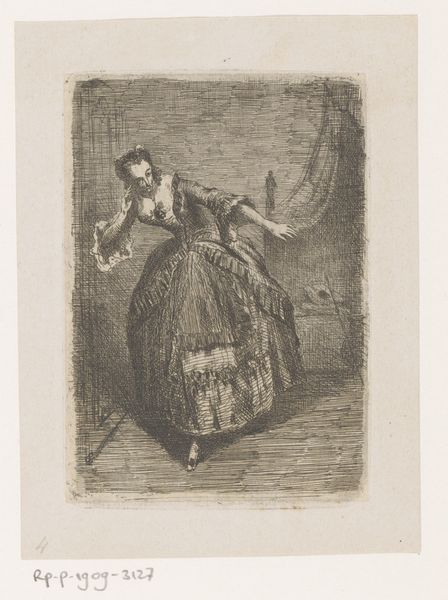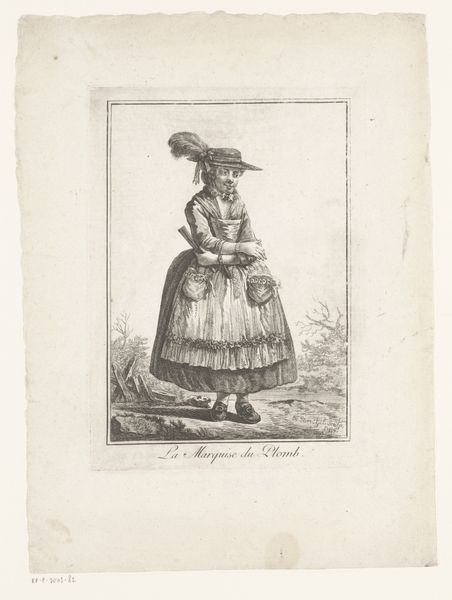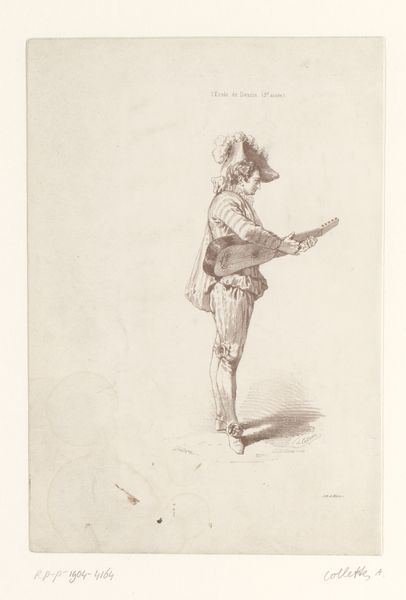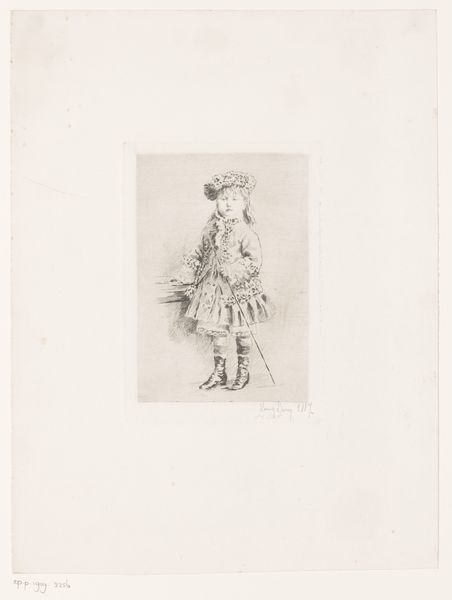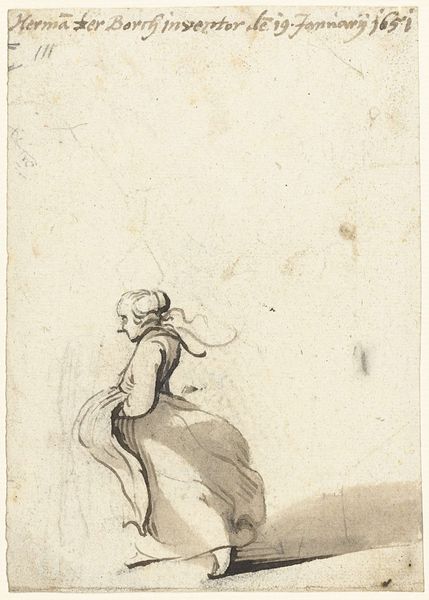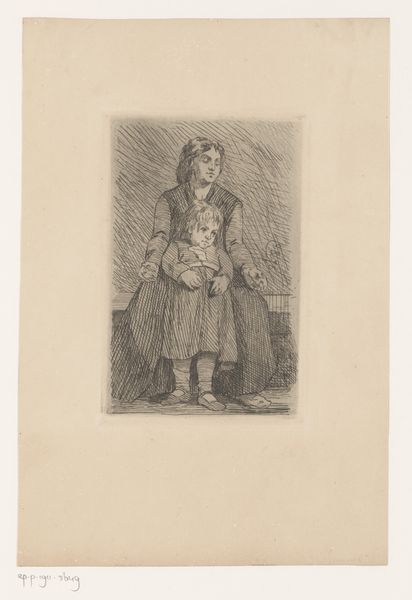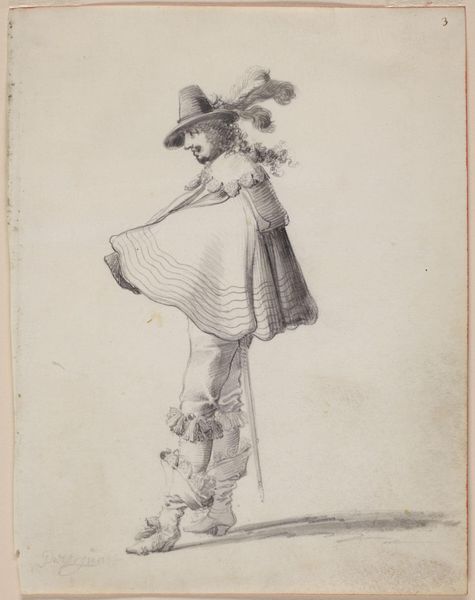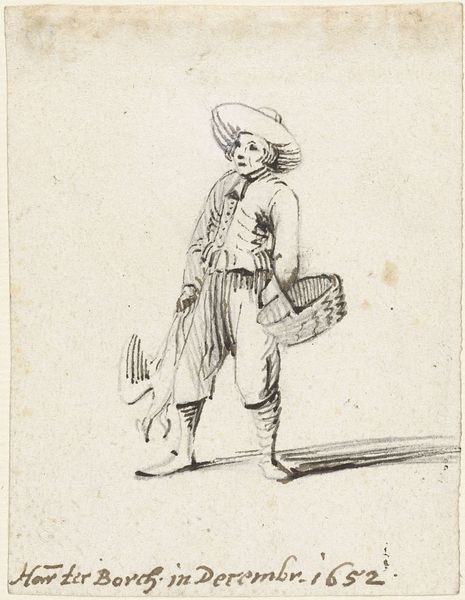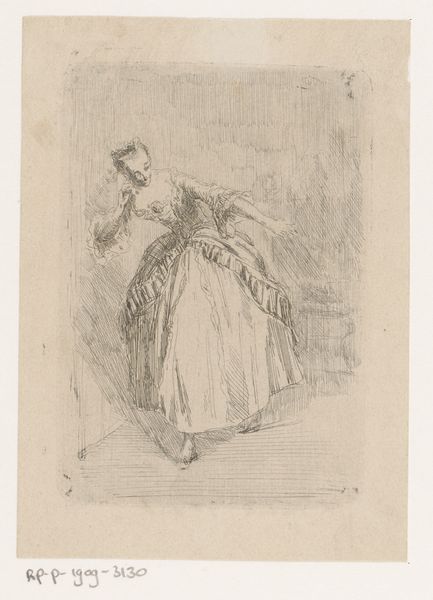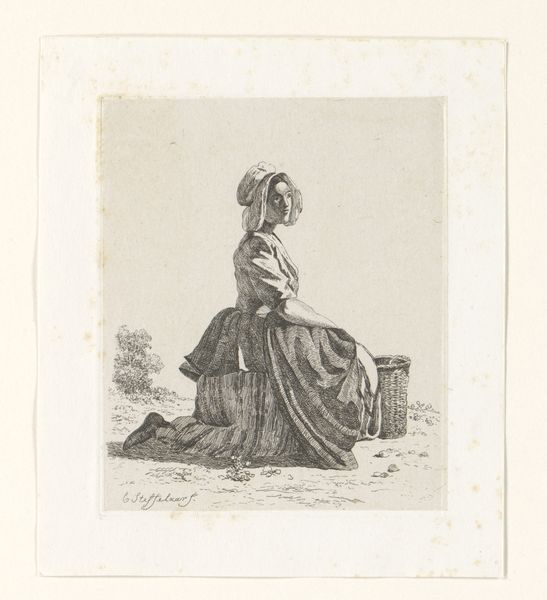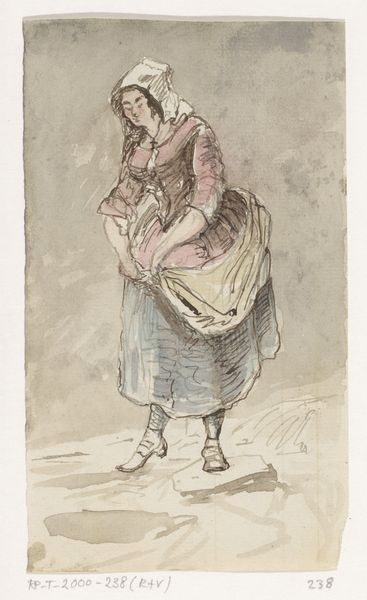
print, etching
# print
#
etching
#
figuration
#
genre-painting
#
realism
Dimensions: height 71 mm, width 56 mm
Copyright: Rijks Museum: Open Domain
Curator: Florent Nicolas Crabeels' "Marketentster," an etching that probably dates somewhere between 1839 and 1879, presents a solitary figure, seemingly paused in motion. It's deceptively simple, yet intriguing. Editor: Immediately, I see a strong sense of movement, a spirited energy captured in those etched lines. The woman almost seems to be dancing, though her expression has a hint of defiance. Is there perhaps a deeper commentary being suggested here? Curator: Absolutely. Marketentsters, like the one Crabeels depicts, occupied a unique space in the 19th century—usually women, often partners of soldiers. They were both integral to and outside of military structure and culture, and frequently occupied ambiguous social and economic positions. Editor: Ah, the ambiguity is visible! I see she carries what appears to be wares for sale. The basket hanging on her front almost has the appearance of weaponry strapped for war. The hat she is wearing appears ostentatious, while her clothing suggests practicality, a working woman perhaps down on her luck? What sort of symbols and attire are we to understand in the greater meaning? Curator: I think the dress challenges notions of gender and labour in a period of conflict. The marketentster becomes a visual embodiment of blurred boundaries – between civilian and military, labour and leisure, woman and soldier. Editor: Her eyes lock with ours. Is the artist making a deeper social commentary? What did he hope the audience would feel? Curator: We can consider Crabeels working at a moment when genre paintings became increasingly interested in revealing underlying power structures, giving greater social meaning. Her confident gaze suggests a woman who refuses to be simply defined or dismissed by any single label. Editor: So Crabeels provides the woman, rather than simply an ornamental figure, with layers of personality? Curator: Precisely. And the lack of specific context beyond the single figure compels us to reflect more on who is making it so and what is that audience supposed to understand. It highlights the historical complexities that were impacting women in the marketplace in those times. Editor: It gives pause, indeed! There's a story in those eyes, a story that shifts depending on how you interpret those symbols of identity. Curator: Well said! I agree. Examining this work gives me greater appreciation for the artist, as well as this historically significant and ever evolving archetype.
Comments
No comments
Be the first to comment and join the conversation on the ultimate creative platform.
